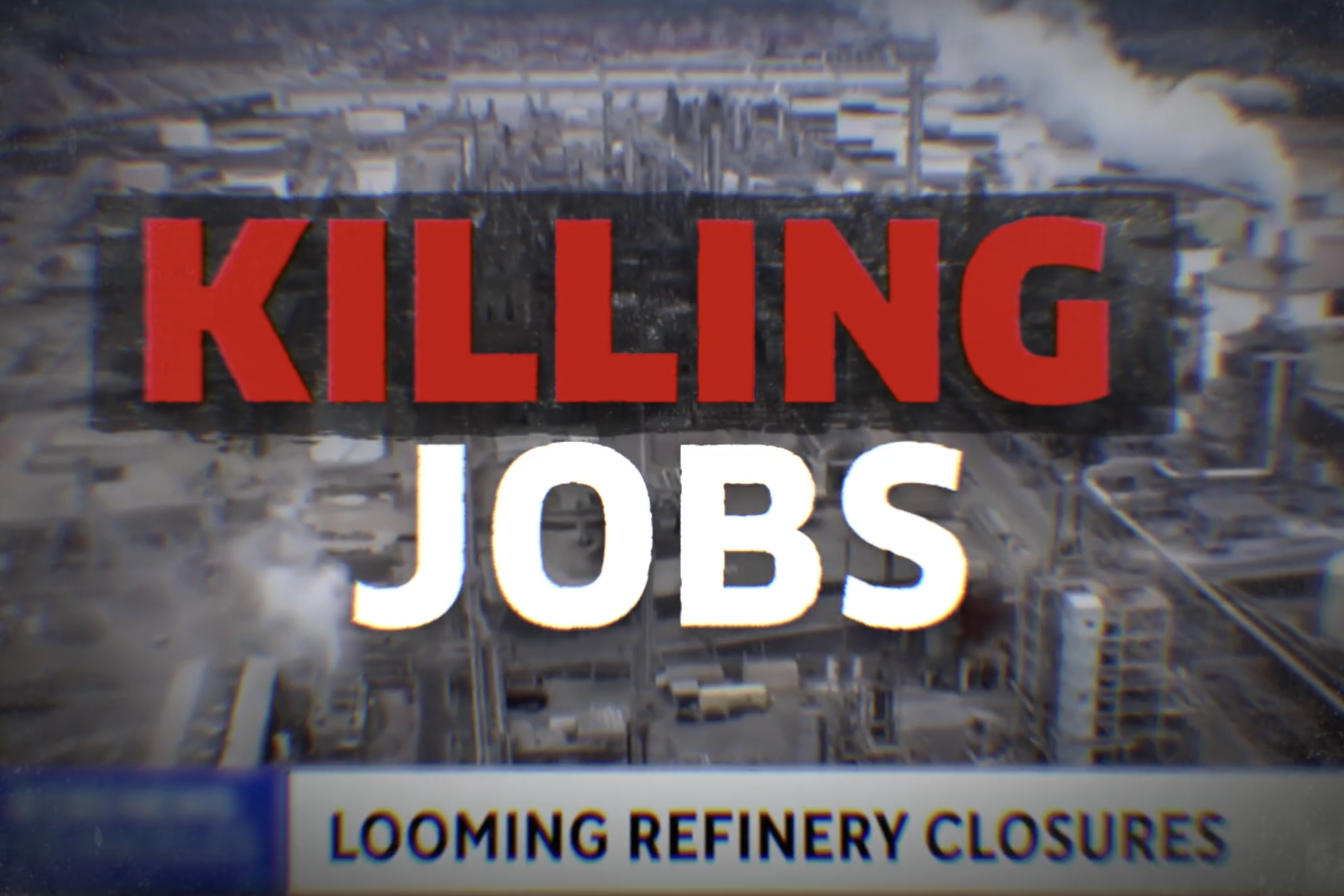Since 2019, the U.S. has lost nearly 1.4 million barrels per day of refining capacity, with yet another company announcing just last month that it will close its 268,000 barrels per day refinery next year. Bloomberg recently reported that this lost capacity is a primary driver of significantly higher fuel prices.
Fuel demand destruction during the pandemic in 2020 was the predominant cause for many shutdowns, but not the only cause. Approximately 372,000 barrels per day of domestic refining capacity was closed and converted to renewable diesel manufacturing, specifically to help refiners meet their obligations under the Renewable Fuel Standard (RFS) or other low carbon regulations.
The consequences of these closures and conversions – a loss of physical fuel production volume and tens of thousands of American jobs – have gone unpublicized. The converted facilities described below will collectively produce less than one-third of the fuel they produced as petroleum refineries and employ only 10 percent of their former workforce, a net loss of nearly 5,000 refinery jobs. In addition to the net fuel production loss driving up pump prices, since refineries generate, on average, an additional 16 indirect jobs for every full-time job, employment losses likely exceed 80,000 jobs from the below four refineries alone.
Phillips 66 Rodeo, CA, Refinery
- Petroleum Refining Capacity: 140,000 barrels per day
- Projected Renewable Diesel Capacity: 44,000 barrels per day when operational
- Net Fuel Loss: 96,000 barrels per day, about 1.5 billion gallons annually
Excerpts from a 2021 S&P Global article on Rodeo’s closure/conversion: “Meeting the Renewable Fuel Standard obligations has become pricier for refiners, due to the rising costs of RINs, particularly for refiners who have to buy these credits to meet their renewable volume obligation as mandated by the Environmental Protection Agency. Currently, Phillips 66 generates about half the RINs needed by liquids blending at its own terminals and buys the rest. The ramp up of the first renewable diesel unit at Rodeo will help mitigate this not only by creating RINs but by giving Phillips 66 the financial benefit of capturing the federal blenders tax credit and California's Low Carbon Fuel Standard credit.”
Marathon Martinez, CA, Refinery
- Petroleum Refining Capacity: 161,000 barrels per day
- Renewable Diesel Capacity: 48,000 barrels per day
- Net Fuel Loss: 113,000 barrels per day or over 1.7 billion gallons annually
Excerpts from a 2022 Fitch ratings report: “Renewable diesel provides several key benefits for refiners, including a hedge against RINs costs, and an improved emissions profile.”
“Unfavorable Industry Regulations: U.S. refiners face rising regulatory headwinds in the U.S. that will cap long-term refined product demand, including higher rising renewable requirements under the RFS program (with associated RINs expense), higher corporate average fuel economy standards, and increased regulation of greenhouse gases on the federal level and state levels, although the industry also has enjoyed temporary relief during high fuel prices to help shield consumers. MPC's net RINs exposure is expected to improve moderately following the completion of the Martinez plant.”
Marathon Dickinson, ND, Refinery
- Petroleum Refining Capacity: 19,000 barrels per day
- Renewable Diesel Capacity: 12,000 barrels per day
- Net Fuel Loss: 7,000 barrels per day or 107 million gallons annually
An S&P Global Q1 2021 article on the conversion states: “Since last year, RINs prices have been steadily rising on uncertainly surrounding the RFS policy under the new Biden Administration, and exacerbated feedstock supply issues. S&P Global Platts assessments show the price of ethanol and biodiesel RINs are averaging 90 cents/RIN and $1.08/RIN, respectively, so far in the first quarter, up from 23 cents/RIN and 47 cents/RIN in the first quarter of 2020.”
"Senior vice president, Global Clean Products of Marathon Petroleum Corporation, Brian Partee said Speedway is a small part of Marathon's extensive terminal network and robust marketing platform. Over the past few years, Marathon has met between 70% and 75% of its RFS obligation through blending at its terminals. The additional RINs and LCSF credits generated when the Dickinson RD reaches full rates will increase that by another 10%, Partee said.”
HollyFrontier (now HF Sinclair) Cheyenne, WY, Refinery
- Petroleum Refining Capacity: 52,000 barrels per day
- Renewable Diesel Capacity: Approximately 6,000 barrels per day
- Net Fuel Loss: 46,000 barrels per day or more than 705 million gallons annually
In June 2020, HollyFrontier cited anticipated loss of the RFS small refinery exemption as a factor in closing its refinery, noting the economic calamity of the COVID-19 pandemic, “…coupled with forecasted uncompetitive operating and maintenance costs and the anticipated loss of the Environmental Protection Agency’s (EPA’s) small refinery exemption.”
The broken RFS is inadvertently incentivizing these closures.
EPA should look to set the RFS requirement in a manner that does NOT inadvertently incentivize refiners to close and convert to renewable diesel manufacturing – resulting in lower refining capacity, less fuel, and fewer jobs. Instead, EPA should decrease the conventional biofuel requirement under the RFS to lower the program’s overall costs, which would both protect existing refining capacity and free up capital for independent refiners to invest in lower-GHG emitting “advanced biofuels” like renewable diesel.
A minor adjustment to the Renewable Volume Obligation (RVO) under the RFS can end this “addition by subtraction.” By lowering its 2022 RVO for conventional biofuel requirement to 13.5 billion gallons – which reflects the federal government’s projected ethanol demand – EPA can maintain ethanol demand while stabilizing runaway RIN prices. This would protect our remaining domestic refining capacity, preserve jobs, lower consumer prices at the pump and create the certainty and predictability refiners need to invest in alternatives like renewable diesel.
There is a win-win opportunity for EPA to protect U.S. refinery capacity, lower gas prices, and better incentivize lower carbon renewable fuels manufacturing, without fueling additional refinery closures and significant job losses for working families. EPA should seize it.


